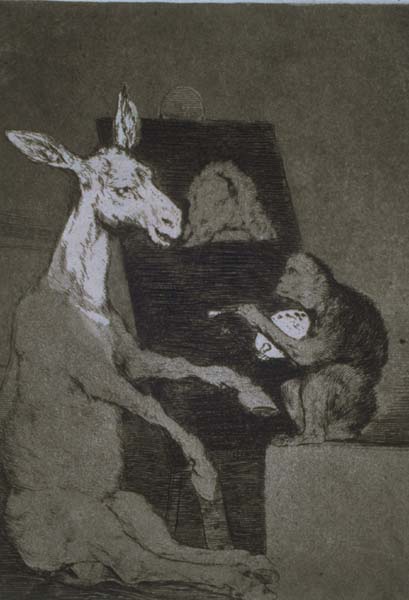Ni mas ni menos (Neither more nor less)

Francisco de Goya Fuendetodos, Spain 1746–1828 Bordeaux, France
Ni mas ni menos (Neither more nor less) plate 41 from the series Los Caprichos (The Caprices), 1796-97 (published mid-19th century) Etching and aquatint
In 1799, Francisco de Goya released the first edition of Los Caprichos, a series of eighty aquatint etchings that explore a wide range of themes. Taking a satirical point of view, the images criticize all aspects of Spanish society without sparing any institution or social class. While preliminary drawings show that Goya had planned for the Caprichos to be a series of dreams, in the end Goya distanced himself from that strict definition, preferring instead to explore reality and fantasy simultaneously. In 1803, Goya was forced to surrender the printing plates and unsold sets to the Spanish king’s Calcografía, which began reselling the sets less than fifteen years later.
The plate entitled Ni mas ni menos depicts a portraitist and sitter, both caricatured as animals. The donkey, an animal that appears repeatedly in the Los Caprichos prints, symbolizes the aristocratic class. The monkey, a trickster by nature, plays the role of court painter. In a set of the Caprichos annotated by Goya’s contemporaries known as the Prado manuscript, Ni mas ni menos receives an additional text: Hace muy bien en retratarse: asi sabran quien es los qe no le conozcan ni ayan visto (He does well by having his portrait painted: thereby those who do not know him or have seen him will know who he is). Although the manuscript’s captions were most likely not written by Goya, the text here creates an additional layer of irony: the monkey’s painting does not match his donkey sitter.
-Melina Mardueño, Class of 2018
Bequest of Mrs. Toivo Laminan (Margaret Chamberlin, Class of 1929) 1979.56